Where phone meets body: how people are making themselves into machines
When tech goes from in your hand to in your body
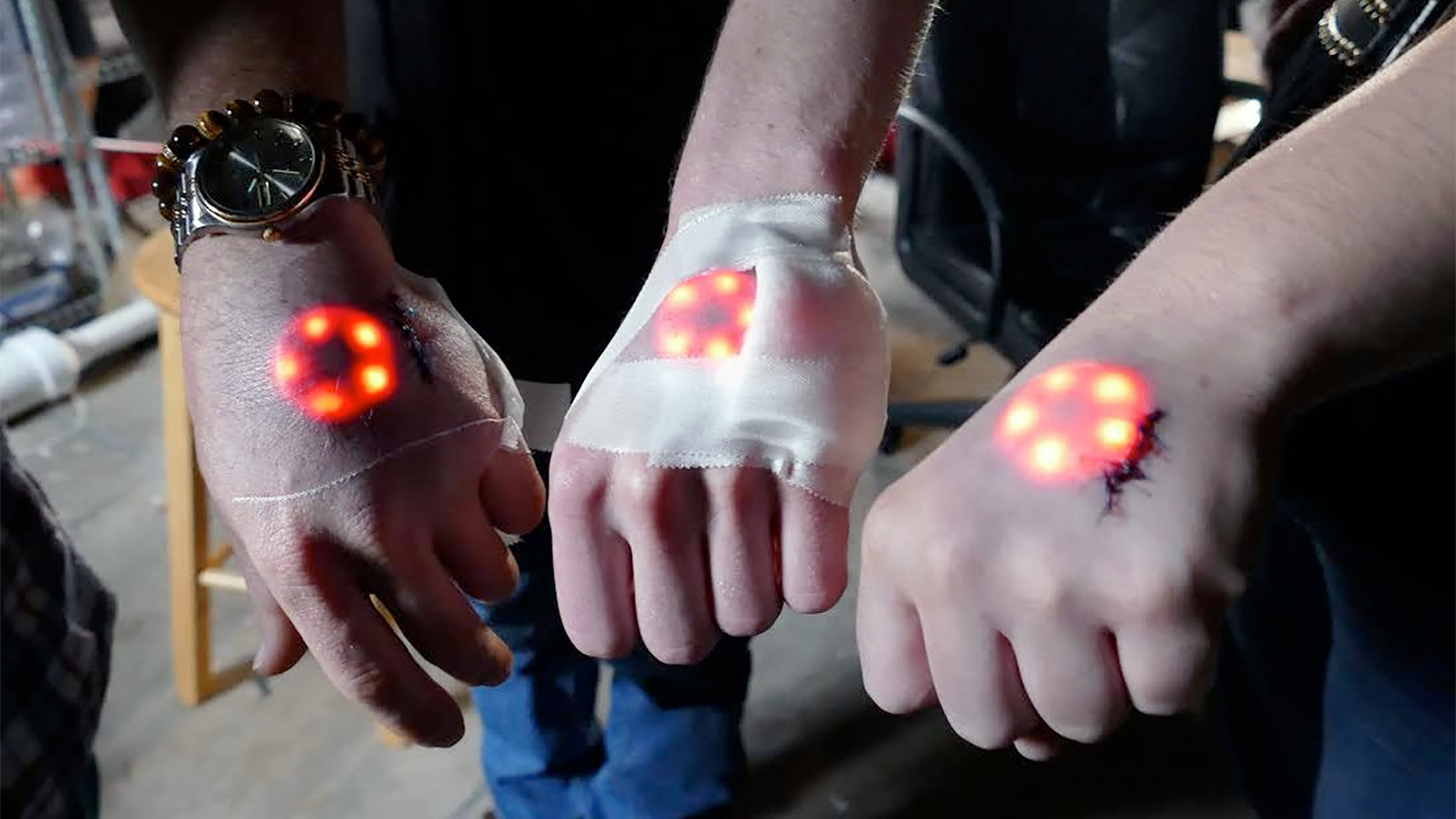
Biohacking, bioimplants, biowearables. It all sounds like the stuff of a 90s tech thriller film, doesn't it? Just as our phones are bleeding into our homes through the whole smart home fad/revolution, phone-like features may soon be embedded into our arms, legs and, cripes, even heads through biohacking.
We're a way off having passports implanted into our skulls, but controlling smart home gear, or paying for things and opening your door with a wave of a wrist are totally feasible.
You need to apply a critical eye to really get to the bottom of this whole area, though. Implant have been commonly used for pets since the 90s, and some of today's supposedly futuristic bio-implants aren't really much more advanced than the rice-sized microchip you might inject into your dog.
Three shades of implants
Let's break it down: there are three rough breeds of bioimplant you'll read about today.
The first comes from hobbyist home-brew biohackers. There's a whole online community of people who are into 'homebrew' implants. You'll usually see these referred to as biohacks or wetware, and there a few sites and forums worldwide where these folk congregate.
The second type of biohack is pretty common: a prototype or concept used by fairly large companies to drum up media coverage. A PR exercise, in other words. These 'products' may be a sign of things to come, but won't usually be developed much beyond the original model that attracted column inches and your attention.
Then there are the products we hear about least, the prototypes made with the idea that one day they'll be used, whether as a commercial product, a healthcare tool, whatever.
Get daily insight, inspiration and deals in your inbox
Sign up for breaking news, reviews, opinion, top tech deals, and more.
Biohacking DIY
Let's start with a few of the homebrew bioimplant projects. No doctor would agree to implant these pieces of tech, or at least would risk their career by doing so. The risk of infection is huge..
But given these experimenters only have themselves to sue, they can hurdle over many of the issues of getting an implant project off the ground.
The Grindhouse Wetware is a self-styled collective originated from the biohack.me forums, and has come up with some of the most eye-opening implants to date.
It started in 2013 when Grindhouse Wetware came up with the Circadia, a pulse and temperature sensor that group co-founder Tim Cannon had implanted in his arm during a body modification show.
It uses Wi-Fi to transmit data from its two sensors to a computer at regular intervals, and has a wireless charging coil (yep, under your skin) to let you recharge the thing without needing to pop open the many stitches required after inserting the box.
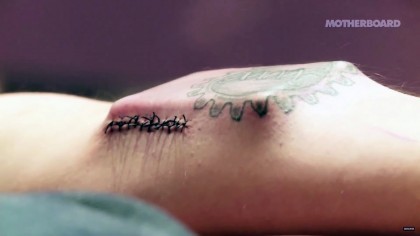
The original implant isn't much more than either a proof of concept or an attention-grabbing body horror stunt, though. Videos online let you see the implant shortly after its insertion, the tissue around it bruising, the stretched skin distorting a tattoo on Cannon's arm.
Is it worth it for some basic temperature readings and a heart rate feed probably less accurate than a chest strap? Maybe not...but it made a point.
More recently in late 2015, Grindhouse Wetware was back to its attention-grabbing antics with North Star, an implant that slots in under the skin on the back of your hand. There's a gruesome video of one being implanted if you're interested in the process.
Right now it's fairly pointless for those not satisfied by a quick show-off. All it does is to light-up five LEDs in a ring formation under your skin, making your hand look a bit like an induction hob. Once again, North Star was shown off alongside some pretty gruesome imagery of people who had just has the things implanted. Bandages and Saw movie-grade stitches everywhere.
![Biohacking, bioimplants, biowearables. It all sounds like the stuff of a 90s tech thriller film, doesn't it? Just as our phones are bleeding into our homes through the whole smart home fad/revolution, phone-like features may soon be embedded into our arms, legs and, cripes, heads through biohacking. We're a way off having passports implanted into our skulls, but controlling smart home gear, or paying for things and opening your door with a wave of a wrist are totally feasible. You need to apply a critical eye to really get to the bottom of this whole area, though. Implant have been commonly used for pets since the 90s, and some of today's supposedly futuristic bio-implants aren't really much more advanced than the rice-sized microchip you might inject into your dog. Three shades of implantsLet's break it down: there are three rough breeds of bioimplant you'll read about today. The first comes from hobbyist home-brew biohackers. There's a whole online community of people who are into 'homebrew' implants. You'll usually see these referred to as biohacks or wetware, and there a few sites and forums worldwide where these folk congregate. The second type of biohack is pretty common: a prototype or concept used by fairly large companies to drum up media coverage. A PR exercise, in other words. These 'products' may be a sign of things to come, but won't usually be developed much beyond the original model that attracted column inches and your attention.Then there are the products we hear about least, the prototypes made with the idea that one day they'll be used, whether as a commercial product, a healthcare tool, whatever. Biohacking DIYLet's start with a few of the homebrew bioimplant projects. No doctor would agree to implant these pieces of tech, or at least would risk their career by doing so. The risk of infection is huge.. But given these experimenters only have themselves to sue, they can hurdle over many of the issues of getting an implant project off the ground. The Grindhouse Wetware is a self-styled collective originated from the biohack.me forums, and has come up with some of the most eye-opening implants to date.It started in 2013 when Grindhouse Wetware came up with the Circadia, a pulse and temperature sensor that group co-founder Tim Cannon had implanted in his arm during a body modification show. It uses Wi-Fi to transmit data from its two sensors to a computer at regular intervals, and has a wireless charging coil (yep, under your skin) to let you recharge the thing without needing to pop open the many stitches required after inserting the box. [[[[[circadia]]]]]The original implant isn't much more than either a proof of concept or an attention-grabbing body horror stunt, though. Videos online let you see the implant shortly after its insertion, the tissue around it bruising, the stretched skin distorting a tattoo on Cannon's arm. Is it worth it for some basic temperature readings and a heart rate feed probably less accurate than a chest strap? Maybe not...but it made a point. More recently in late 2015, Grindhouse Wetware was back to its attention-grabbing antics with North Star, an implant that slots in under the skin on the back of your hand. There's a gruesome video of one being implanted if you're interested in the process. Right now it's fairly pointless for those not satisfied by a quick show-off. All it does is to light-up five LEDs in a ring formation under your skin, making your hand look a bit like an induction hob. Once again, North Star was shown off alongside some pretty gruesome imagery of people who had just has the things implanted. Bandages and Saw movie-grade stitches everywhere. [[[[north-star-2]]]]As Grindhouse Wetware CEO Justin Worst told us, though, there's more to it:](https://cdn.mos.cms.futurecdn.net/2e12b755838834004bce8b528bcbfa33.jpg)
As Grindhouse Wetware CEO Justin Worst told us, though, there's more to it:
"Reaction from the general public has been mostly favourable. The majority of people are curious about what we're doing and why we want to do it.
"There are a lot of people who don't see the point of us wanting to put devices in our bodies that "just light up". Once we explain to them we need to do this as a stepping stone and we answer any other questions they have, they see us in a positive light," said Worst.
"Version 2.0 will have wireless charging… [and] will also feature programmable gesture recognition," Worst told us.
The often-quoted example is that North Star 2.0 will let you open a smart door, a good example of a confluence of implants and IoT, two developing areas of tech
The team also plans to circle back around to its original Circadia project, with a more fully-featured bio-tracker that, fingers crossed, won't leave you looking like you've had a house brick implanted in your forearm. It is open to outside development too. "We will keep the device open source, so the user will have full rights to use the device however they wish," said Worst.
Home-brew headphones
A lot of 'scene' biohacking projects focus on making us 'more than' human. Some have a lighter edge, though.
In 2013 Rich Lee came up with a rather interesting listening device. Standard dynamic driver headphones work using a magnet to control the movement of a speaker cone. In Rich Lee's design, the speaker part is implanted into the little flap of cartilage that sits over your ear canal, and the magnetic coil worn around the neck.
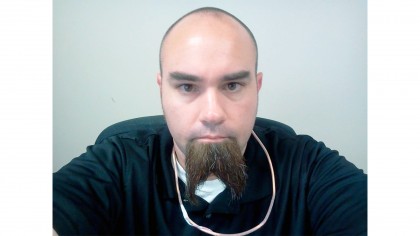
It's a slightly bonkers idea somewhat comparable with bone conduction headphones, where your head is used as a speaker cone of sorts, but Lee's ambitions are actually even greater. He is losing his sight, and is currently working on a way to modify this concept into an echolocation device, letting him sense when an object is close without seeing it.
We had a word with Lee about how the project is progressing:
"In order for the device to work as an implant, it needs to have a microphone and an ultrasonic emitter external to the body. So we could have a transdermal unit (with the speaker portion under the skin and the other components coming through the skin), but that has some issues we are trying to work around.
"Basically there is a high infection rate with transdermals. We are currently working on some unique coatings to go over the device that would fuse to the skin like chitin so that a better barrier is formed in the area. If successful, the coating will allow for us to do dozens of other implants we want to get done too. It will also solve our power supply issues, allowing us to power devices externally."
These difficulties mean Lee wasn't able to give us any estimates as to when a prototype might appear, but his attention has also been drawn away by what he admits is a... "strange sub-project".
The Lovetron9000 is a vibrator intended to be implanted just above the penis, in order to stimulate a female partner during sex. It'll be made out of components derived from an electric toothbrush, and Lee is hoping to finish the project "by August".
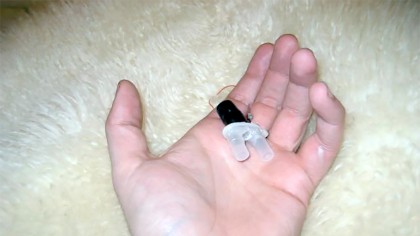
Lee and Grindhouse Wetware's Cannon are what's known as Grinders, people into using implants to augment the human form. It's a sub-culture. Grinder projects can often seem 'out there', but they come with a lack of ties to a need to make money.
RFID
While Grinders tend to work with ultra-low budgets and teams of just a few people, it's where you'll currently find the most concrete examples of implants. You are far more likely to end up with something completely different. Something even a doctor would struggle to notice.
The least invasive implant is an RFID chip. I've been at technology shows where people were happily being injected with one of these chips, which is about the size of a grain of rice.
This isn't a super-computer, of course, but a sensor of the same family as you'll find in wireless payment-capable credit cards and Oyster cards. It's the technology used in Apple Pay too. Such a chip could be used as a means of identification at the door to your office building or a way to interact with smart home devices without touching your phone.
Turn the bedside light on and off with a wave? I'm not sure I'd get chipped for the purpose, but it would be neat to try.
Several companies have already explored this idea. Stockholm's "House of Innovation" Epicenter started offering RFID implants to replace security passes in 2015. It's a members club and 15,000ft office space block that is out to attract people working in digital.
Epicenter's Chief Disruption Officer Hannes Sjoblad told us he has "personally been involved in about 500 chippings in the last year or two and don't know of anyone who has removed theirs."

These chippings don't happen in a back room at Epicenter HQ, but the team will recommend a pro third-party that will do the job.
"Normally one not only buys an implant but also for the installation to be made by a piercing professional. The whole procedure costs about 150 USD including the implant and professional removal of the implant is included in that price when that day comes," says Sjoblad.
"Quite a few people at Epicenter have them and use them daily. In order to use your implant for access at Epicenter, you just need to be a registered member."
Here's where we can do with some wider context. Some transhumanists may talk about these RFID chips like they are a gateway to an inevitable future, but these are similar to the chips we've been jamming into our dogs for 20 years (granted, they appear to be a little smaller).
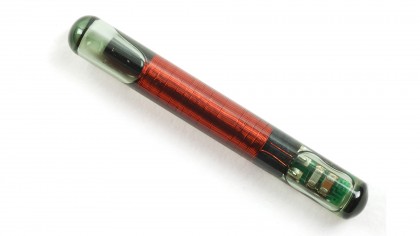
You can even get a bumper pack of 100 livestock/animal RFID chips from eBay for £260.
It's not hard to imagine why many have a problem with the idea of being digitally labelled in this way either. We've been warned against it by reams of sci-fi films for decades.
Andrew is a freelance journalist and has been writing and editing for some of the UK's top tech and lifestyle publications including TrustedReviews, Stuff, T3, TechRadar, Lifehacker and others.
